Pressure filters: methods for cleaning drinking water, filtration steps, sorption materials, varieties of devices. Practical recommendations.
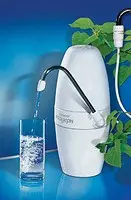
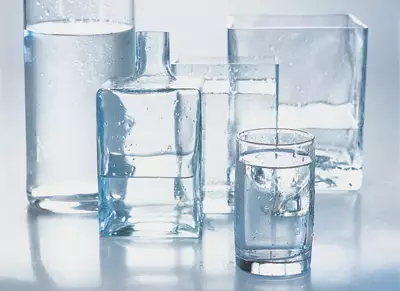
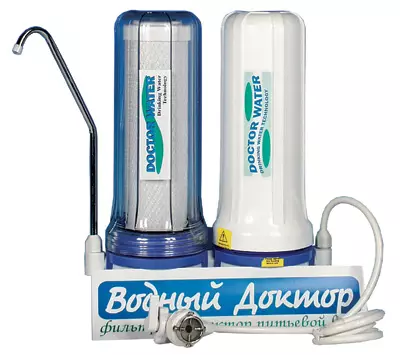
Desktop filter of the "Water Doctor" series, which is used as the final stage of cleaning "Track membrane"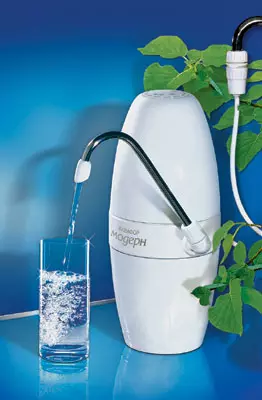
Model "Aquaphor-Modern" compact and attractive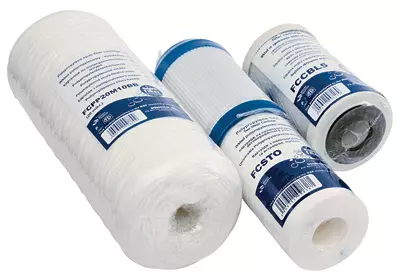
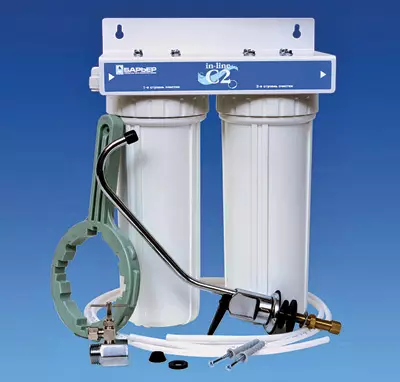
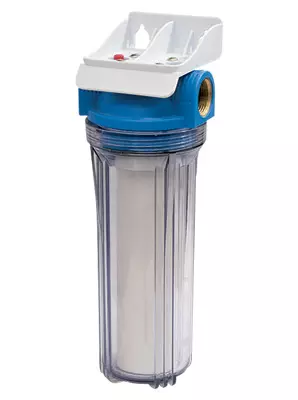
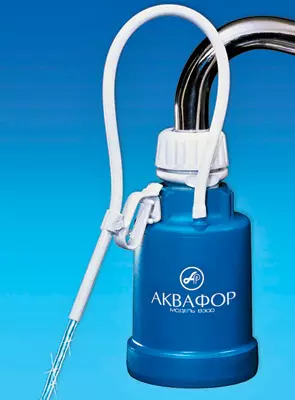
Removable filter nozzle "Aquaphor B300"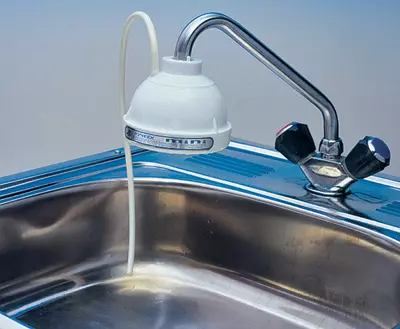
Removable filter nozzle "Crimp MINI-suite"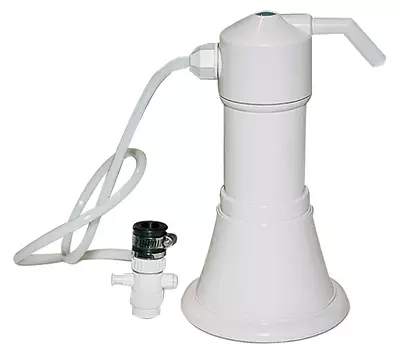
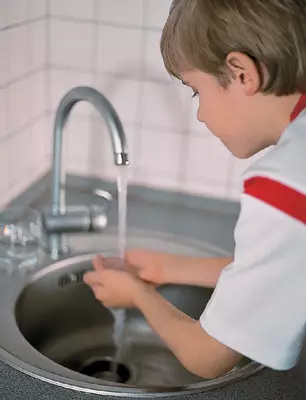
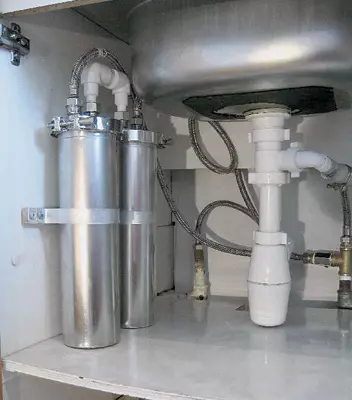
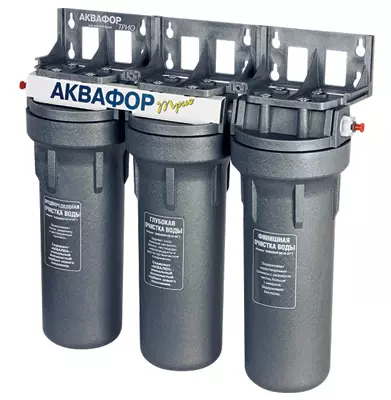
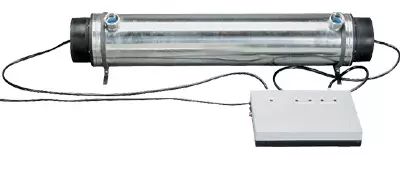
For a whole life, a person drinks about 50 tons of water. Is it worth explaining how important its quality is played?
This review material continues a series of publications that started the article "Filter for Water - Caprice or Necessity." This article conversation went about the quality of drinking water flowing from the cranes of our apartments (systems of municipal water supply) and own homes (autonomous water supply), and we came to the disappointing conclusion that water from its own source is required to clean, and municipal.
All household filters offered by the modern market, we were conventionally divided into two categories: cumulative and pressure.
IN Filters-drives Cleaning occurs with the natural seeping of water through the filter element. The books belong to both pitchers with a capacity of 1.5 to 3.5 liters and their more spacious 3-15l counterparts, which we told last time.
Pressure filters They differ in that to leakage water through filter elements, pressure is required. They, in turn, can be divided into two groups:
Filters using classic purification methods: Mechanical filtering (coarse, thin and ultra-thin), sorption, ion exchange and oxidation (about each of them we also told in detail);
Filters based on reverse osmosis, in which the filter membrane delays almost all substances other than water molecules. This can be said, a universal cleaning method, allowing you to get the water of maximum purity.
In order not to overload you with information, today we will focus on the filters of the first group using classical cleaning methods, and the article on the reverse osmosis systems will publish later.
Disadvantages of urban water
Water entering the water supply and arising from the crane of the urban apartment, as a rule, it takes good preparation and meets the requirements of Sanpin 2.1.4.1074-01 (more than this question covered the article "Water Filter - Caprice or Necessity"). Sheets of microbiology is acceptable. But the organoleptic properties of told water, odor, color, not always suit consumers. This is due to the fact that it contains chlorine and its interaction products with organic compounds; Mechanical suspension (Il, sand, rust); Secondary pollution products.Previously, except for yla, sand and rust include dissolved gases, organic compounds, petroleum products IT.P. The presence of secondary pollution products in the water is associated with the situation that has developed in utilities: which pipes, when and how are laid, long-standing water networks were repaired.
Opinion of specialists
Vadim Andreevich Kulikovsky, Candidate of Physical and Mathematical Sciences, Director General of the company "Water Fatherland".
What coal sorbent is preferable?
- Three types of coal sorbents are used in filters for cleaning drinking water: granular bulk, extruded and fibrous (carbon fiber).
For the first case, the granulate simply falls asleep into the housing. When passing through this backfill, the part of the water that flows along the walls is cleaned about 2 times worse than the one that goes through the center. But the water always tries to walk along the path of the smallest resistance along the walls of the container or through the largest "holes" between the granules. Pressing coal behaves somewhat better than bulk, but still retains some of its shortcomings: large pores and movement along the walls are possible.
Carbon fiber filters have a large sorption capacity, or, simply, it can absorb a greater number of contaminants per unit of their own weight. They have both better kinetics. It is explained by the fact that the "landing platforms", on which pollution deposits, in carbon fiber filters are more affordable. Involved angle is available mainly by external pores, to get to the inner age of pollution difficult. Alleged with this granular sorbents have so-called fatigue, this is when the "landing platform" in external pores are already occupied, and although the sorbent could take another rather large number of pollution due to internal porosity, but there is no access to it.
In order for the sorbent to still take a new portion of pollution, he just need to "rest" from water filtration. During the "recreation", part of the pollution captured by external pores will go through diffusion in the inner pores (the concentration is leveled), as a result of which the "landing site" on the outer layer will be released, the filter will be ready for operation. For a fibrous sorbent, the phenomenon of "fatigue" in principle does not exist, coal fibers are very thin, and therefore "seating" on them is much more affordable. As a result, the sorption capacity of the coal fiber is 4-7 times more than that of granular. In addition, the coal fiber, in contrast to the granules, is quite moving, and even if somewhere between the fibers there will arise "channel", water, rushing into it, draws the fibers, thus healing, thus the defect.
True, there is a carbohyder one significant drawback, its cost is 2-3 times higher than the cost of granular coal. High price filters based on carbon fiber scares buyers. Strike. If you calculate the cost of 1l water purified by carbon fiber and granulate, then the first value will be approximately 1.5-2 times less than the second (carbon fiber is more sorption capacity). So, from the point of view of the economy, carbon solid is preferable.
Alternative opinion
Vladimir Nikolaevich Fedotov, General Director of Mettem Technologies:
- The fibrous sorbents are really somewhat better than the kinetics of sorption. This is well known. As for the capacity of sorbents of different types, then in terms of a unit of weight, it all is all about the same. But coconut coal is significantly cheaper. No wonder in the products of the world's largest producers, it is quite rare to find products with filling from coal fiber.
Two-stage filtering
The experts surveyed by us agreed that to combat the flaws listed above in most cases (that is, with the normal composition of water, confirmed by its chemical analysis), it is necessary and enough that the pressure filter has two steps. The first step is a mechanical cleaning at which secondary pollution products are removed. The second step is to remove chlorine and the products of its interaction with the organic, organic substances and dissolved gases.
Preliminary cleaning increases the service life of the second stage, more precisely, does not allow to reduce the effectiveness of its action due to the climbing by weaving, brings water.
It is possible to significantly extend the life of a home filter, especially its first stage, by setting the pre-cleaning filter into the water supply system: mesh (with cell size 50-100 μm) or cartridge fine cleaning (with a pore size of 5-10μm). It is even better to use both. This will allow you to safely acquire a pressure filter without the first stage and, of course, will have a beneficial in the state of sanitary and domestic appliances using water. If near the source of drinking water in the house, the kitchen is washing and dishwasher, you can go from the opposite: to purchase a filter with a powerful pre-cleaning step (there are also such) and squeeze the washing and dishwasher and other techniques from it. On drinking needs, such a filter takes only a small part of the water that has been prevalent.
The second stage of cleaning the devices offered by the market can work one of the two principles: sorption on activated carbon or a special polymer and ultra-thin filtration.
Sorption materials
In the pressure filters used activated carbon of three types: granulated flowing, extruded coal and carbon fiber. Most manufacturers use the first two types. Moreover, coal is used coconut, not birch, as it has a greater sorption capacity. Two Russian firms are used: "Aquaphor" (Akvalen fiber) and the "water of the Fatherland".The company "Geyser" invented and successfully applies as a filter material synthesized according to the original method of a polymer, with a branched labyrinth structure and pores from 0.1 to 3.5 μm. According to the manufacturer, this material has a combined effect combining adsorption, ion exchange and mechanical filtering. In addition, it is characterized by the effect of quasi-softening, even with a large hardness of water, the scale is not formed, and the precipitate is easily flushed with water.
Ultrafiltration
Ultrafiltration is carried out using a membrane of various types, such as ceramic and "tracks". On the latter it is worth staying in more detail.
The company "ECOMMBRANI" offers a new technology "Water Doctor", the essence of which is a multistage pre-cleaning and final thin prepaid-ultrafiltration using the "track membrane". The "track membrane" itself is a polymer film, particularly processed to obtain the smallest pores "tracks" (microtubule) with a diameter of 0.2-0.3 mkm. They are located in a film with a density of up to 400 million per 1 cm2. According to the manufacturer, the technology "Water doctor" allows you to clean water from residual chlorine and chlorine, dissolved organic organics (including petroleum products), two- and trivalent iron, aluminum, 100% purifies water from any bacteria and pathogenic bacterial agents, significantly reduces The concentration of pesticides, heavy metals (confirmed by the certificate). At the same time, useful substances and trace elements are preserved in the water. The "track membrane" can be used for water with increased pollution, where other filters exhausted the resource extremely quickly.
Opinion of specialists
Boris Evgenievich Ryabchikov, an employee of the SSC of the Russian Federation of Vni inorganic materials, Doctor of Technical Sciences, author of the book "Modern methods of water preparation for industrial and domestic use" (2004, Delhi publishing house).
When to change the cartridge?
Many firms set two values of the resource indicator - in litter and in time of operation (from two months to year). As a rule, the time parameter is determined from the following calculation: the average water consumption is taken per day with one person and is multiplied by the number of family members, the average daily consumption of the family is obtained. Then the service life of the filter in litter is divided by the value of the average daily consumption, and thus calculates the change in the cartridge. Well, of course, the replacement time is determined by the considerations of microbiological safety. So, if water is used, to put it mildly, poor quality, it is clear that it presents a certain number of microbes. Even if your filter does not miss them, it does not mean that everyone will immediately die. They will settle on the cartridge (especially microbes love coal cartridges) and can begin to multiply. After all, what is a home filter? It is warm, and water is constantly inside it. "Heat and raw" is the same environment that is extremely favorable for the development of microbes. As experts say, the filter begins to "figure the fur coat".
If you use the filter constantly (new portions of chlorinated water are constantly entering it), the rate of fouling will be not very high. But when for some reason you do not use the filter for a long time (IT.P.'s business trip), the rate of fouling may increase repeatedly. As a result, the outlet of the filter in water may simply be a vitality of microorganisms of the life of microorganisms. It is clear that drinking such water is simply unsafe.
To reduce the rate of fouling, thereby increasing the life of coal cartridges, many manufacturers add silver into them. But it should not be thought that silver is a panacea from all angry. The quantities safe for human health in which it is contained in the cartridge, silver microbes does not kill, it only significantly reduces the speed of their development. That is why it is not worth blindly trusted by advertising calls for some grief manufacturers and sellers: "Our filter completely destroys microorganisms!" To silver start to destroy microbes, it should be contained in water in quantities exceeding MPC (0.05 mg / l), but this may not be, because in such quantities it becomes almost the same poison as all heavy metals (MPCs introduced it Not at all in vain!). It is clear that no manufacturer will go for it.
In general, to protect themselves from the trouble, it is necessary to observe (emphasize!) Observe the changeance of the replacement of cartridges- both on the litter and on the calendar. To facilitate the solution of the task, it is worth purchasing a filter with the indication system. This can be like a simple indicator of the date of the next replacement, and the fully automatic system that the sama flashes the need to take action. Items and other indicators are now completing their filters not only foreign, but also domestic manufacturers (sorry that is not all!).
The sake of fairness should be mentioned about completely simple systems, as they are called manufacturers, "self-defications". They work simply: when developing a resource, the filter reduces (and rather sharply) pressure of purified water. But such "indications" systems may not be completely safe. For example, with small quantities of weighing in the water, the filter will reset the head as much later than the coal cartridge will produce its resource. So, as they say, they hope for "self-inducation", and himself ...
Yves conclusion about the existing ways to combat bacteria settled in the filter. Some firms are equipped with their two- and three-circuing ultraviolet lamp models that helps cope with this misfortune. IAsli you had a steady desire to have on the home filter also ultraviolet disinfection, and in the house there is already a fully satisfying filter, change it to a new one, with UV treatment, not necessarily. It is enough to purchase a system of disinfecting and embed it between the filter and the crane for clean water. Such compact UV devices offer on our market of Aquapro (South Korea), "National Water Resources" ("NVR", Russia), R-CAN (Canada) and others. The mercury-quartz lamp is placed in a stainless steel housing, designed for a pressure of 10 atm. and equipped with two fittings for connecting water (quick disconnect connections for a plastic tube). Lamp resource - 9000 hours (approximately 1 years of operation). Performance - from 4 to 30 liters / min. The device is equipped with a power supply (220V) and the controller that will turn on / off the lamp when opening / closing the crane for clean water (saves the lamp resource). Power consumption - from 10 to 200W. Complete delivery includes plastic clips for fasteners of the UV disinfection on the wall. The price of these devices ranges from $ 150 to $ 330. Includes the least powerful, and therefore the cheapest.
Rigid and "iron" water
It is impossible not to take into account that the water of urban water pipes can vary greatly within the established norms. Simply put, in every city the water is its own, and in major cities the differences are observed between any two districts. These differences are to increase the rigidity or content of iron, and sometimes both in the other.
Among the cartridge filters offered by the modern market there are structures that save them from these misfortunes. Manufacturers go in two ways. Forward, the case is added to the cartridge layer of ion exchange material (granulated or fibrous). In the second, they create an additional third stage of deferlication or softening, and sometimes both together (the filter becomes three or four-stage). It is clear that the container, for example, on the stiffness salts at filters with an additive of a small layer is significantly less than that of filters in which the whole stage is dedicated to softening. But in that and in another case, it should be borne in mind that filters save only when the MPC is not too large for the maintenance of hardness and iron salts. If the water is very rigid (7mg-eq / l) or there is a lot of iron (1mg / l), the filters sold in the retail network are unlikely to save the capacity of the cartridge is small, and often change its work is a ruiner).
It may assist that the own water treatment station, manually controlled or automatically and equipped with a regenerated softener or a high-capacity imbeller. But such stations are created under a specific order in accordance with the analysis of water and are quite expensive.
Currently used for the purification of tap water filters using constructive features can be divided into three groups: filters on the faucet, desktop filters and filters installed under the sink. The result of these groups will be discussed in three subsequent articles.
